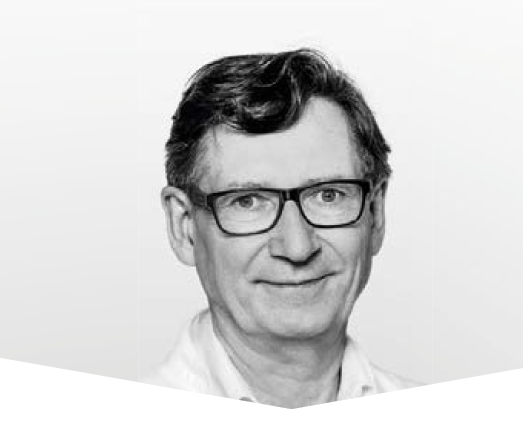Professeur Peter Bjerring
In this article, Pr. Peter Bjerring discusses how, with its twin wavelengths (589 & 1319nm), the ADVATx is much more than just a yellow laser. Besides being highly efficacious when treating all vascular lesions, the combined use of both wavelengths yields unparalleled results when treating acne, scars and damaged skin.
How long have you had the ADVATX?
I’m not sure, it’s been a while, when the research started, really. I was made aware of the project back about 10 years ago when the future founders of Advalight were still in engineering school. So, I had the first prototype as soon as it became available.
What attracted you to the ADVATx?
 The main attraction for me was that, for the first time, I could get yellow light without the consumables. I was working both at a public hospital and in a private clinic and both had a pulsed dye laser at the time and the dye was a significant cost. I had also owned a copper vapor laser, emitting at 578 nm. With this technology, we had to wait for the copper to evaporate at around 1,200°C which took forever, and, of course, you didn’t want to turn it off otherwise you’d have to go through the whole warm-up period all over again! It also came with significant running costs as the copper and the gas in the laser tube needed regular replacement.
The main attraction for me was that, for the first time, I could get yellow light without the consumables. I was working both at a public hospital and in a private clinic and both had a pulsed dye laser at the time and the dye was a significant cost. I had also owned a copper vapor laser, emitting at 578 nm. With this technology, we had to wait for the copper to evaporate at around 1,200°C which took forever, and, of course, you didn’t want to turn it off otherwise you’d have to go through the whole warm-up period all over again! It also came with significant running costs as the copper and the gas in the laser tube needed regular replacement.
For which indications do you use the ADVATx?
We use it mainly for 2 indications: all kinds of vascular lesions and rejuvenation. For rejuvenation, we have been using the 1319nm wavelength either alone or in combination with 589nm. We use 1319nm to gently raise tissue temperature in order to create a controlled inflammatory reaction that induces fibroblast proliferation, leading to neo-collagen genesis. And then, we use the 589nm to target the superficial vasculature to achieve an expansion of the capillaries, with release of thrombocytes outside from the capillaries into the interstitium. These are a trigger for the proliferation of fibroblasts, again boosting neo-collagen production. So, we have 2 different ways to induce collagen production and we like to use these in succession. We typically deliver 3 to 4 treatments, each a month apart.
When you talk about vascular lesions, what are you referring to?
Number one in Denmark for us are telangiectasias of the face, which are very common. People here have very fair skin and get too much sun exposure. We also treat a fair amount of rosacea. With these patients, the number of treatments will vary. Some patients only have dilated blood vessels in the superficial layers of the skin, which makes it easy to treat. Others will have dilated vessels in the full thickness of the skin, so will require more treatments. Some patients are actually very happy with the results from a single treatment, but we sometimes must administer up to 5 treatments to get satisfactory results. I also treat port wine stains, though I don’t get to see that many since, in Denmark, these are typically treated in hospitals spe- cializing in children.
Do you see other benefits of having the ADVATx, other than the lack of consumables?
Because of the greater safety profile of the ADVATx and its intuitive interface the learning curve is very short, so training new physicians to operate the system is very easy. Also, for these reasons, the treatments may be delegated to nurses, which I particularly like.
Why is this so?
For 2 reasons:
- The energy of the ADVATx is delivered very gently through a longer pulse than other systems;
- The longer wavelength provides a larger therapeutic window.
Both combine to make the ADVATx a very safe laser to operate.
Any downsides to the ADVATx?
Treatments do take a little longer to administer, which is why I like to be able to delegate treatments safely!
In conclusion, is there anything else you’d like to say about the ADVATx?
It’s a nice machine. It delivers great results. It looks good in the clinic and it’s made in Denmark, and the fact that this is generally viewed as a sign of quality is a great source of pride for me.
 Professor Peter Bjerring, MD, Dr.Sci.(Med) is a Danish dermatologist, at present serving as Head of the Department of Dermatology, Aalborg University Hospital, Denmark and as a Consultant at Molholm Private Hospital, Vejle, Denmark. He is a Board Certified Specialist in dermatology in Denmark, Norway and the Netherlands. He has published more than 250 scientific papers and given more than 500 invited lectures at congresses and scientific meetings worldwide. Professor Bjerring is Past President of ESLD, Past Vice President of ESLAS and a Fellow of AAD, EADV, ESLD, and ASLMS. He has been granted a Knighthood by Her Majesty Margrethe II, Queen of Denmark in recognition for his contributions to laser dermatology.
Professor Peter Bjerring, MD, Dr.Sci.(Med) is a Danish dermatologist, at present serving as Head of the Department of Dermatology, Aalborg University Hospital, Denmark and as a Consultant at Molholm Private Hospital, Vejle, Denmark. He is a Board Certified Specialist in dermatology in Denmark, Norway and the Netherlands. He has published more than 250 scientific papers and given more than 500 invited lectures at congresses and scientific meetings worldwide. Professor Bjerring is Past President of ESLD, Past Vice President of ESLAS and a Fellow of AAD, EADV, ESLD, and ASLMS. He has been granted a Knighthood by Her Majesty Margrethe II, Queen of Denmark in recognition for his contributions to laser dermatology.












